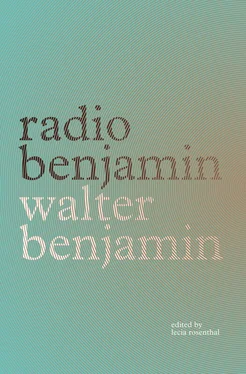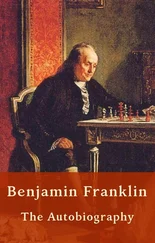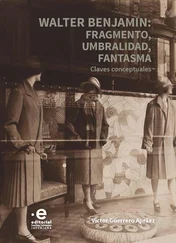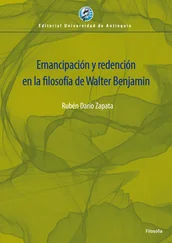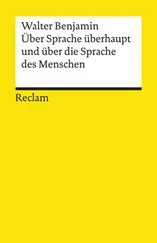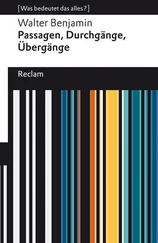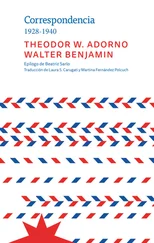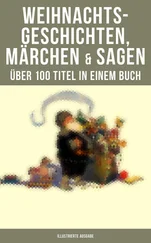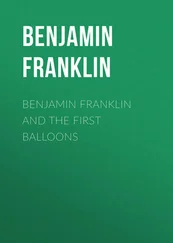Before I tell you more about it, however, I’d like first to describe the toy gallery in full. By chance I began with the kingdom of dolls, but I’ll tell you about that next time. Up next: the animal aisle, which would put any magician to shame. It’s hard to describe the sorts of animals I came across there. Blue and pink dogs, horses so yellow that from afar they looked like shapes made of orange peel, apes and rabbits so artificially colored as to resemble the tulips the flower ladies sell at Potsdamer Platz. Not to mention Felix the Cat, who was available in large quantities, and the tiny Bibabo puppets, which you can slip over your fingers as the nice sales lady did before putting on the most indescribable little theater piece. She only stopped once she realized that under no circumstances would I buy what was on offer, which is how I felt in the animal gallery as well. But later on I just couldn’t resist and I bought something. It’s a very strange game, rather new, I think, but in any case I had never heard of it. It was nothing more than a small box with fifteen or so different rubber stamps. Each stamp had a piece of a landscape on it: houses, figurines, dirigibles, cars, boats, bridges, etc. It also came with an ink pad. With just a large sheet of paper you could spend hours stamping together various landscapes, neighborhoods, events, and stories. But that was already in the “party games” department, which came just after the animals. I nearly forgot to say how many Easter bunnies there are now in the animal gallery. Department stores have now become strategic locations; they would be the first to be occupied by the Easter bunnies if they ever planned an attack.
Cover your ears for a moment. What I have to say now is not for children to hear. Next time I will tell you the conclusion of my tour. I’m worried sick I’ll soon be swamped with mail, letters along the lines of: “What? Are you completely mad? You think that kids don’t already whine from morning to night? And now you’re putting ideas in their heads and telling them about thousands of toys that, up until now, thank God, they knew nothing about, and now they want all of them, and probably things that don’t even exist anymore?” How should I answer them? I could just take the easy way out and beg you not to repeat a word of our story, don’t let on a thing, and then we can continue next week just like today. But that would be mean. So it’s left to me to calmly say what I really think: the more someone understands something and the more he knows of a particular kind of beauty — whether it’s flowers, books, clothing, or toys — the more he can rejoice in everything that he knows and sees, and the less he’s fixated on possessing it, buying it himself, or receiving it as a gift. Those of you who listened to the end, although you shouldn’t have, must now explain this to your parents.
“Berliner Spielzeugwanderung I,” GS, 7.1, 98–105. Translated by Jonathan Lutes.
Broadcast on Radio Berlin, March 15, 1930. Benjamin dated the typescript “Berlin Radio, 15 March, 1930,” and for this date the Funkstunde announced a “Youth Hour (Berlin), Speaker: Dr. Walter Benjamin” from 3:20–3:40 pm.
1Amélie (Linz) Godin (1824–1904), author of Märchen von einer Mutter erdacht (1858), Neue Märchen von einer Mutter erdacht (1869), and other collections of fairy tales. Benjamin refers to Godin’s work as his and his wife Dora’s “favorite collection of fairy tales” in a letter to Scholem (letter dated January 13, 1920, in The Correspondence of Walter Benjamin, 155).
2See “Schwester Tinchen,” in Godin, Märchenbuch, 3rd edition, mit 137 Holzschnitten und 6 Bildern in Farbendruck: nach Originalzeichnungen von Otto Försterling, Gustav Süs und Leopold Denus (Glogau: Carl Fleming, c. 1870–1880), 401–9. The image Benjamin discusses can be found on p. 402. In The Arcades Project, Benjamin attributes a version of the story to Friedrich Wilhelm Hackländer ( Das Passagen-Werk [Z1, 2], GS, 5.2, 847 and 1055; The Arcades Project [Z1, 2], 693 and 881), but it has not been found in Hackländer’s Märchen (Stuttgart: Krabbe, 1843).
3Benjamin refers to the front page of Berlin’s newspaper, the Vossische Zeitung, which featured two men holding spiked staffs standing on either side of the king.
4See Goethe, Faust II, lines 11581–2 and Faust I, lines 1699–700.
CHAPTER 7. Berlin Toy Tour II
Many of you will probably want to know where this grand toy store is located, the galleries of dolls, animals, electric trains, and party games that I led you through last time and will continue to lead you through today. Nothing would be easier than to tell you where it is. But advertisements are not permitted on the radio, even subtle ones, so I cannot give you a name. 1What shall we do? Some children might like to confirm that what I said is true. And since it really is true, I would like nothing more than to do just that. Thus I must be cunning in revealing to you the following: as you have surely figured out by now, I was in a large department store.
Now have a look around, and be sure not to miss the huge metal model of the new Lloyd steamboat, the “Bremen.” It’s so big, you can see it from afar. The entire thing was made from a mechanical building set. I’m not sure how many of you could rebuild it. To do so you would need the construction kit in size 9, which is the largest, and costs 155 marks. Have you ever heard of the Paris World’s Fair, which all of Europe was talking about in 1900? On all the picture postcards made for the exhibition, you could see in the background of the city of Paris a gigantic wheel with maybe sixteen cabins on moving hinges. The wheel turned slowly, and the people sitting in the cabins could look out over the city, the Seine, and the exhibition below until the double motion, from the swaying of the cabin on its hinges and the rotation of the giant wheel, made them feel sick. Even this wheel has been replicated in a model kit. Its parts move, and the little cabins sway just like the real ones did thirty years ago when your grandparents might have sat in them. All of this was located in the “party games” section. I won’t dwell too much on the games I saw there. You’re surely familiar with all the different variations of Quartet, this lovely game that teaches you to be sly, mischievous, and polite all at once, and you also know the dice games played on big boards like “Game of the Goose,” “Travels Around the World,” “Carnival at Schröppstedt,” as they used to be called; “In the Zeppelin,” “Northern Voyage,” and “The Good Copper,” as they’re called today. I’d rather tell you about an electronic question-and-answer game. It is made up of one little battery, a bulb, and two plugs. You push one of the plugs into a board covered with questions, next to each of which is a little metal rod. Next you look for the answer on a different board. For example, if you stick one plug on the question “Which river flows through Rome?” you then look for the answer with the other plug, and if you find the right spot, the electric bulb lights up. This toy is really quite ingenious, in that the teacher has artfully transformed himself into an electric bulb.
And there are still other, very subtle educational tidbits hidden in toys. I was most impressed with a completely new toy designed for six-year-olds just learning their sums. It is a beautifully polished wooden apple, scented as well, not like a Borsdorfer or Russet apple, but just like wood. Were you to look at it up close, you’d see how cleverly it is constructed, and that it comes apart into six different pieces that can be used to teach arithmetic to the youngest pupils. If only it had a core, it could be used for the older students as well. But is it still a toy? And the so-called activity toys, pearls to be threaded on strings, weaving patterns for kindergarteners, all of which you can find nearby, are these really toys? And decals? And most of all, what about the Oblaten? 2I don’t know. But I’d like to talk to you about the Oblaten. Not just because I liked them as a boy, but also because I put together a very beautiful collection of my mother’s Oblaten, which included things that you can no longer get today in stationery stores, such as entire fairy tales: Tom Thumb, Snow White in colorful detail, Aladdin and the Magic Lamp, Robinson Crusoe, and more. I don’t know why, but I still see these tiny little images, showing the terrible genie with snarling teeth appearing before Aladdin, who’s quaking in terror, or Robinson as he nearly drops his parasol with shock when he first discovers the nibbled human bones on the island — these moments, which are depicted in many children’s books, are always in my head as if I still had my Oblaten albums open before me today. This is a good counterweight to all those kissing turtledoves, cherubs, flower carts, and ruffled angels; you’ll need scissors if you want to remove them from their paper packaging, right next to the manufacturer’s name or “UX 798” or some other such business gibberish printed in little red letters.
Читать дальше
